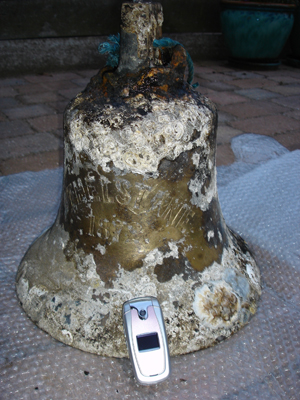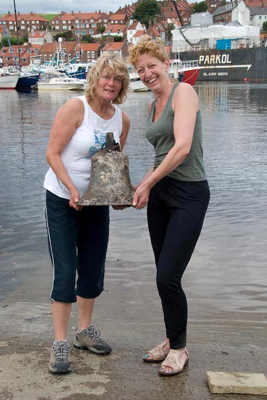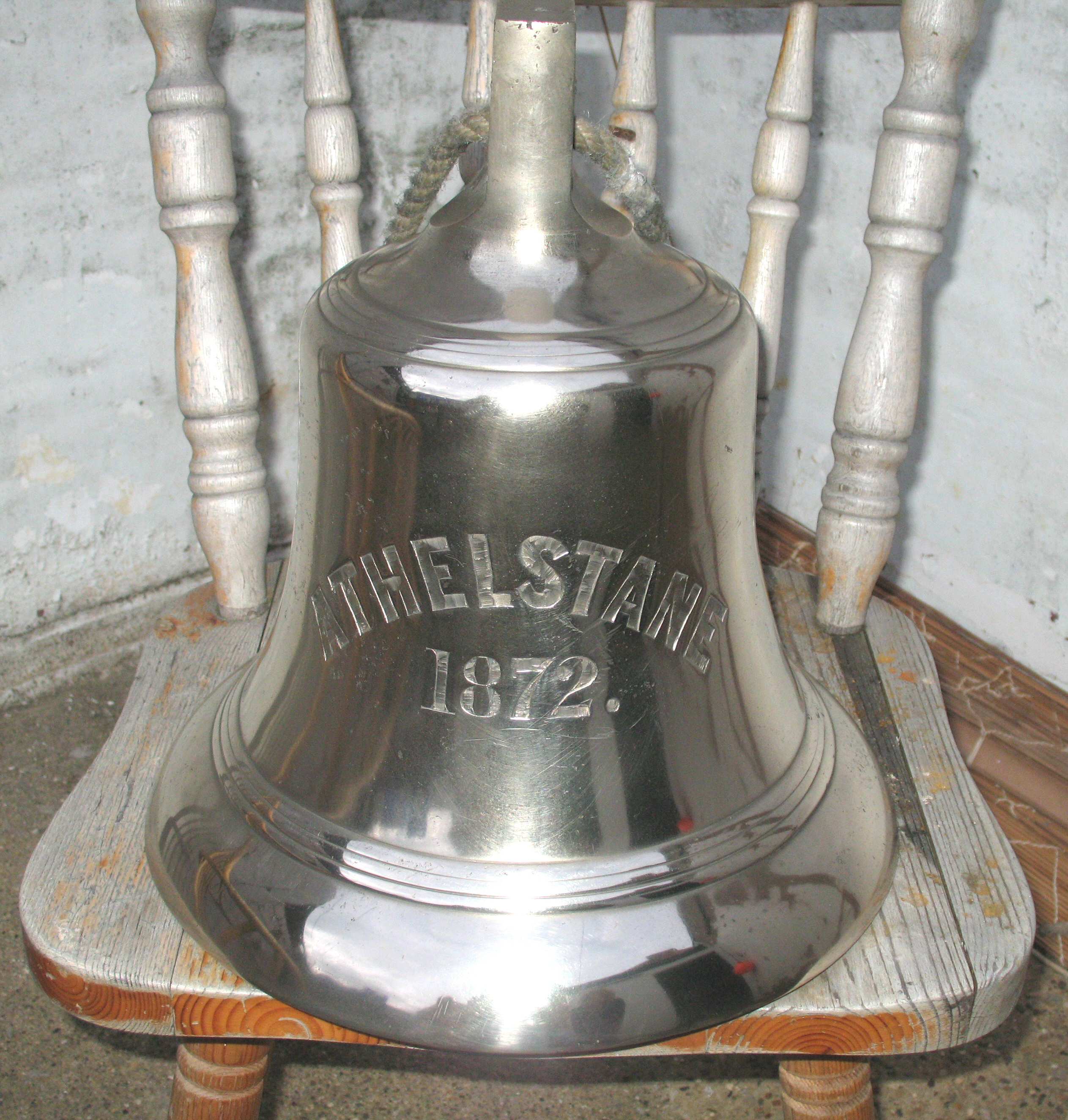
Carl Racey

Carl Racey was for many years part of the SubseaTV partnership along with Andrew Jackson a diving team that researched, located and identified many of the deep wrecks which scatter the Yorkshire coast. As a fellow deep diver in my time I admired the challenge Carl and Andrew set themselves, a challenge which they had great success with.
I often wondered what Carl was up to and met him by accident when he was in Whitby on an errand of research. We had a good chat and he explained a little about some of the wrecks he has been diving, he certainly sounded as though he is as busy as ever. Carl is pictured above with a water filter he recovered from the Scarborough DEPTFORD sunk by a German mine off Filey Brigg. He described the wreck as a very intact wreck with much more to give.
Carl is no longer affiliated to his old team and now dives most weekends & holidays with Andy Dowsland & Brian Smith who own his old boat Northstar. Carl explained Andy takes a great deal of interest in the research side and describes Andy and Brian as "Two of the nicest guys!" His endeavours are not only restricted to Whitby as he has some promising projects off Bridlington. It is true that Carl enjoys his diving with a passion, diving with Chris Baker of Filey (and Filey Divers) during the week. He still maintains a good working relationship with Scarborough Sub Aqua Club and the following story is typical of his success.
The Cannon Wreck


Carl told me about the "Cannon" wreck he had been diving a few miles off Staithes. It was known locally as George's wreck after a Staithes fisherman George Harrison, when he passed away last year his ashes were scattered over the wreck at his request. During the dive, Julia Racey and her buddy Joyce Jesson, were amazed to find a large bell, and along with two guests from Hull BSAC they lifted it to the surface whilst diving from the Scarborough club R.I.B. Fin 'S'. It is little wonder both Julia and Joyce seem (above right happy) happy with the bell at the marina slipway. Hull Sub Aqua Club is quite informative and can be accessed using the previous link or why not sample one of the clubs Newsletters.
Even though encrusted the bell showed no sign of deep damage and as it was cleaned it must have been so gratifying to see the wreck's name clearly visible (see the photograph at the bottom of the page) and finally positively identifying the ship as the "Athelstane" circa 1872, lost on the 17th December 1892. Carl was not able to find the loss as having been recorded on any of the usual lists, until finally getting an account of the sinking from the Whitby Gazette Archives. Carl sent me the photographs on this page with me, allowing me permission to share them with you, as usual I would ask that you respect his copyright. He also submitted the details of the Athelstane which I have reproduced below with express permission from the Whitby Gazette!
The Athelstane
Whitby Gazette 23/12/1892:- COLLISION OFF WHITBY.
A Steamer and a Three Masted Schooner Sunk.
About four o'clock on Saturday night, the steam trawler HERO brought into Whitby the crew of two vessels, which had sunk after a collision off Whitby High Light the night previous. It appears that the steamer ATHELSTANE, of North Shields (Captain W. W. Foreman), managed by Mr. H. E. P. Adamson, of Newcastle, laden with coals from Shields to Rotterdam, collided with the cement-laden schooner PSYCHE (Captain Barden), of Whitstable, off the Whitby High Light at about half-past six o'clock on the Friday night.
The night was dark and clear, and, as described by the Norwegian seaman who was at the wheel of the schooner, the mate being also on the deck, the schooner was sailing along beautifully under all sail when the collision occurred. The steamer struck the schooner on the port bow. The schooner was badly damaged and her head immediately began to sink, the crew at once taking to their own boat, one of them having been damaged in the collision. Shortly afterwards she went down head first. The crew of the steamer, perceiving that their own vessel had sustained serious damage, also took to their boats and both the crews, to the number of twenty-three, rowed about until picked up by the steamer KRONUS, of Seaham Harbour, which ultimately transferred them to the trawler which landed them.
The KRONUS laid by the ATHELSTANE all night and took her in tow at daybreak, the captain for some unaccountable reason refusing to take hold before. The steamer sank about two o'clock on Saturday afternoon when off Huntcliff. She was 1,104 tons gross, and built at Hebburn in 1872. The crew of both vessels lost nearly everything they had on board, the steward of the steamer losing about £18 worth of provisions with which he was provisioning the crew, and only saving his poorest suit of clothes. The bright faced cabin boy of the schooner left the ship in his stockings, and was provided with a half worn pair of shoes on board the rescuing boat.
Immediately on their arrival at Whitby, Mr. J. N. Lawson, the excellent representative of the shipwrecked Mariners’ Society, was communicated with, and performed his duties with such promptitude that every man was provided with a good meal at the Seaman’s Institute, the particulars of each case taken, and they were enabled to leave the town by the six o'clock train the same night. All the steamers crew belonged North Shields. Every attention was paid to them at the Seamen’s Institute, and Mr. Thomas Cass, pilot rendered all the services he could to both crews.
The bell finally cleaned and polished bears little resemblance to the one originally brought to the surface.
Click the image above to se it in greater detail.
As you might expect when any ship is lost there is always a report of some kind in a newspaper, however without a positive identification it is no easy feat trying to find such reports, though sometimes a bit of research can pay dividends. The report from the Whitby Gazette and the Shields Daily News are but two newspapers that covered the loss of two vessels. Carl found that his own local newspaper the Scarborough Gazette also covered the sinking's, a copy of its report can be accessed here.
Like many ships of her day the Athelstane experienced had more than one misfortune:
Shields Daily News 10/03/1883
GROUNDING OF TWO VESSELS ON SHIELDS BAR. - About 10 o'clock last night, the screw steamer ATHELSTANE, belonging to Messrs Adamson and Short, Tyne Street, North Shields, while coming into the Tyne, struck on the bar in passing through the Narrows, and remained fast for about an hour, when, with the flow of the tide, she came off. She then proceeded up river to Elswick, where she is discharging her cargo of iron ore, at Sir Wm. Armstrong’s works. - Shortly afterwards the Norwegian brig LOVEN, Captain Toft, from Arendal, was entering the Tyne, she took the ground close to where the ATHELSTANE had grounded, and remained fast until the tide rose, when she came off. She had, before taking ground, bumped several times in crossing the bar. She now lies moored at the first tier below the Penny Ferry gangway at South Shields. It was low water at the time. Neither of the vessels were damaged.
On the 31st October 1885, Messrs. Hawthorn
St. Peters Works Newcastle issued the following circular; -"
We beg to inform you that we have entered into an arrangement with Messrs.
Leslie & Co. shipbuilders Hebburn on Tyne by which our businesses
are amalgamated as from the 1st July 1885 with a view to the formation
of a limited company which will be styled "R and W. Hawthorn Leslie
And Company Ltd."
Carl was very much going to be a good source of providing information and illustrations on which I could add more pages to the diving side of my website. The following page gave me an insight into how he saw the future and he provided me material for the secondpage. I also added another page that is indelibly linked to Carl Racey and Andrew Jackson's diving exploits.
Carl was profoundly interested in his diving and enjoying something of a 'second wind', with many new projects in the research stage. Sadly however, Carl passed away in May 2016 leaving behind a loving family and many great friends. Its fair to say that Carl was involved in so many things and I never knew how he balanced everything. His loss to the diving fraternity will be felt globally as he contributed to so many diving wesbites and was always happy to share the wealth of experience and knowledge he had built up over the decades. The work carried out by Carl and Andrew paved the way for many of todays divers who visit the east coast.
© Carl Racey & Colin Brittain 1999 - 2022
